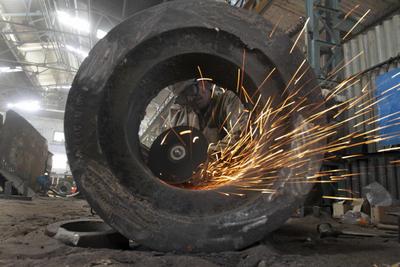At home, however, you are just as likely to hear condemnation from those worried about the underprivileged this prosperity has bypassed. Such voices present India with a double challenge: they misrepresent the successful way growth has cut India’s poverty, but more importantly their critiques stand in the way of a much needed new wave of reforms, which would further benefit India’s poorest.
The reform naysayers, among them the socialists in the ruling Congress party, reject the ‘miracle’ that may soon see India overtake China’s rate of growth. Instead they argue that gains have accrued to the rich, while inequality has increased. The most articulate critics include India’s progressive novelists, chief among them Pankaj Mishra, who recently wrote of the need to defend the downtrodden against ‘the pitiless exploitations of the new business-minded India’.
Of course, in a country with more poor people than anywhere else on earth, desperate poverty remains a fact of life. But the evidence is fairly clear now, despite the deterioration in governance symbolised by the current corruption allegations over the sale of mobile phone licences in 2008, that the growth which followed India’s liberal reforms actually pulled as many as 200m out of poverty. Had the reforms started a quarter-century earlier, more would have followed.
These improvements are also shared by nearly all underprivileged groups, a fact now documented in a series of studies. The political scientist Devesh Kapur, for instance, examined the fortune of the Dalits (or ‘untouchables’) in India’s most populous state, Uttar Pradesh, between 1990 and 2008. His research found that 61 per cent of those surveyed in the east of the state, and 38 per cent in the west, said that their food and clothing situation was now ‘much better’ than in the past. Al Stepan and Yogendra Yadav, also political scientists, found an even more striking result: less than a quarter of those in disadvantaged groups had seen their financial situations worsen between 1996 and 2004.
What of inequality? Economist Amartya Lahiri recently studied India’s ‘scheduled’ castes and tribes – two very disadvantaged groups – and concluded that the past 20 years ‘have seen a sharp improvement’ in their relative economic fortunes. Two more economists, Pravin Krishna and Guru Sethupathy, found that while inequality (measured by a widely used index) had risen initially, it then fell back to the 1988 levels by 2004.
So while the picture on Indian inequality is complex, a straight-line rise certainly cannot be asserted. But it is the finding on poverty that is more striking. Its implication is that being poor is now seen by India’s underprivileged as a removable condition. India is witnessing what I have called a revolution of perceived possibilities.
In the 1980s, when growth was stagnant, Indians showed an attitude of resignation. Indeed I, along with my fellow economist Arvind Panagariy, predicted some years ago that economic aspiration would see India’s voters increasingly vote for politicians who promise to deliver more growth.
This was underlined dramatically by the November election in India’s most backward state of Bihar, where a coalition led by pro-development chief minister Nitish Kumar won a landslide victory. Mr Kumar’s popularity in an impoverished region suggests that his fellow politicians can now be braver. They should look to augment reforms, not reverse them as the misguided progressives urge. This would mean a new push to expand trade liberalisation further in all sectors of the economy. Reforms could also further free up India’s labour market, accelerate privatisation, and open up its retail sector to investment from the rest of the world. All these can produce high economic returns, alongside improvements for the poor.
These moves offer an added dividend too. Earlier rounds of reforms have generated revenues which can now be spent on targeted health and education programmes for the poor. This is what Indian planners wanted from the 1950s, but could never afford when revenues were as stagnant as the nation’s growth rate. Now the current generation can finally deliver.
Jagdish Bhagwati is a Professor at Columbia University and senior fellow at the Council on Foreign Relations, New York. This article is based on the Lecture that Professor Bhagwati gave to the Indian Parliament (Lok Sabha) on December 2nd 2010. The full text of the Lecture is available here, at the Lok Sabha website. An version of this piece was originally published in the Financial Times, on 1 December 2010.

